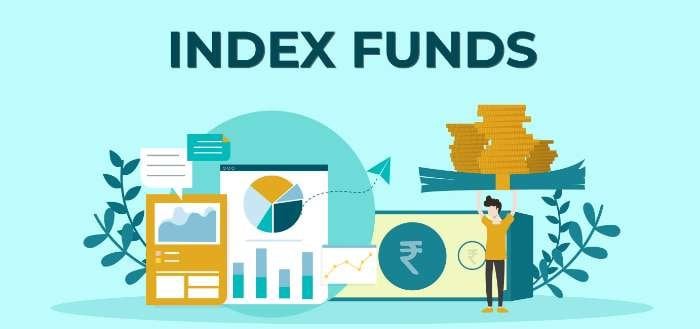Importance of Low Cost Index Funds

Why Low-Cost Index Funds Are the Best Way to Invest
In the quest to build long-term wealth, investors often face a critical crossroads: Should they pursue the excitement of actively managed funds, or embrace the simplicity of low-cost index funds? Decades of research, real-world data, and the sobering lessons of market history point to a clear conclusion: Low-cost index funds are the most reliable, efficient, and effective way for most individuals to grow their wealth. By harnessing the power of compound interest, minimizing fees, and sidestepping the pitfalls of active management—as underscored by S&P Global’s SPIVA reports—index funds offer a path to financial success that is both accessible and empirically validated.
The Power of Compound Interest
Compound interest, often dubbed the “eighth wonder of the world,” is the engine behind wealth creation. It occurs when your investment earnings generate their own earnings, creating exponential growth over time. For example, a $10,000 investment growing at 7% a year will be $76,123 in 30 years. But if you start earlier—say, investing $10,000 at 7% for 40 years, you'd have $149,744. This is with a one time, $10,000 investment.
If you started with just $1000 and invested $1000 every month for 30 years at a 7% return, you'd end up with $1,141,141. That's with a total contribution of $361,000.
The key to maximizing compounding is time and consistency. Even modest contributions can snowball into life-changing sums when given decades to grow. However, this process is fragile: High fees, poor returns, or frequent trading can derail it. This is where index funds shine. By delivering market-matching returns with minimal interference, they allow compounding to work unimpeded.
How Fees Erode Returns: The Silent Wealth Killer
While compound interest builds wealth, fees quietly dismantle it. Even seemingly small differences in expense ratios have staggering long-term consequences. Consider two investors:
- Investor A chooses a low-cost index fund with a 0.04% fee.
- Investor B opts for an actively managed fund with a 1% fee.
Assuming both earn 7% annually before fees, a $10,000 investment grows $74,852 (Investor A) versus $57,434 (Investor B) after 30 years. The 0.96% fee difference erodes nearly 23% of Investor B’s potential wealth.
Actively managed funds often carry additional costs: transaction fees, sales loads, and tax inefficiencies from frequent trading. These drags compound over time, making it nearly impossible for active managers to overcome their own costs—let alone outperform the market.
The SPIVA Report Card: Active Management’s Report Card
S&P Global’s SPIVA (S&P Indices Versus Active) reports provide a damning indictment of active management. Updated semiannually, SPIVA compares the performance of actively managed funds against their benchmark indices. The findings are consistent:
- Most Active Managers Underperform
Over 15 years, 89% of U.S. large-cap fund managers fail to beat the S&P 500. Similar trends exist across asset classes and regions. For instance, 95% of Canadian equity managers trailed the S&P/TSX Composite Index over a decade. - Short-Term Success Is Luck, Not Skill
Even in years where active managers outperform, there’s no persistence. SPIVA data shows that top performers in one year rarely repeat their success. Past performance, as regulators warn, does not predict future results. - Survivorship Bias Distorts Reality
Many underperforming funds are liquidated or merged, skewing perceptions. SPIVA accounts for this by including defunct funds, revealing even grimmer results.
Why Active Management Fails
The SPIVA reports expose systemic flaws in active management:
- The Efficient Market Hypothesis: In highly competitive markets like U.S. large-cap stocks, information is rapidly priced in, leaving little room for managers to gain an edge.
- High Costs: Active funds’ fees—often 1% or higher—create a hurdle too steep to clear consistently.
- Human Bias: Managers and investors alike fall prey to overconfidence, herd mentality, and emotional decision-making.
Even legendary investors like Warren Buffett advise against active management for most people. His famous “Million-Dollar Bet” saw a low-cost S&P 500 index fund trounce a portfolio of hedge funds over a decade.
The Psychological Edge of Index Funds
Index funds foster discipline by automating a “buy-and-hold” strategy. They prevent investors from chasing hot stocks, panic-selling during downturns, or overtrading—all of which harm returns. Studies show that the average investor underperforms the market by 2-3% annually due to poor timing. Index funds eliminate this temptation.
Conclusion: The Case for Simplicity
Low-cost index funds are not merely a “good enough” option—they are the optimal choice for most investors. They leverage compound interest by capturing broad market returns, avoid the fee drag that plagues active strategies, and align with decades of data from SPIVA. In a world where complexity and noise dominate, index funds offer a quiet, evidence-based path to financial security.
As Jack Bogle, founder of Vanguard and pioneer of index investing, famously said: “Don’t look for the needle in the haystack. Just buy the haystack.” By owning the market through low-cost index funds, you’re not settling for average—you’re harnessing the collective growth of global capitalism, one disciplined investment at a time.